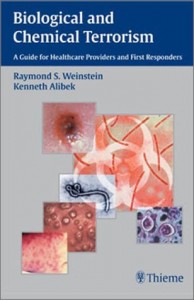-76%
The Comprehensive Guide to PET Imaging in Lymphoma
Clinical Assessment and Medical Imaging in Lymphoma
Lymphoma, a diverse group of cancers originating from the lymphatic system, requires a thorough clinical evaluation. Medical imaging plays a crucial role in diagnosing, staging, and monitoring treatment response in lymphoma patients.
Structural Imaging in Lymphoma
Conventional imaging modalities, such as computed tomography (CT) and magnetic resonance imaging (MRI), provide valuable anatomical information in lymphoma. These techniques help identify enlarged lymph nodes, masses, and other structural abnormalities that may indicate lymphoma.
FDG-PET in Lymphoma
Fluorodeoxyglucose (FDG) positron emission tomography (PET) is the cornerstone of nuclear medicine imaging in lymphoma. FDG-PET exploits the increased glucose metabolism of lymphoma cells. By injecting FDG, the tracer accumulates in metabolically active areas, facilitating the visualization and characterization of lymphomatous lesions.
FDG-PET in Pediatric Lymphoma
The role of FDG-PET in pediatric lymphoma mirrors its significance in adult patients. It provides a non-invasive means to detect, stage, and assess response to therapy in children with lymphoma.
Non-FDG Tracers in Lymphoma
Beyond FDG-PET, several non-FDG tracers hold promise in lymphoma imaging. These tracers target specific molecular characteristics or biological pathways associated with lymphoma, offering potential advantages in diagnosis and monitoring.
Functional Imaging Techniques in Lymphoma
Functional imaging techniques, such as functional magnetic resonance imaging (fMRI) and optical imaging, have emerged as complementary modalities in lymphoma imaging. fMRI measures changes in brain activity associated with lymphoma, aiding in understanding the neurocognitive effects of the disease. Optical imaging visualizes the distribution and function of fluorescent probes within lymphoma cells or tissues.
Diffusion-Weighted MRI in Lymphoma
Diffusion-weighted MRI (DW-MRI) assesses the microscopic movement of water molecules within tissues. In lymphoma, DW-MRI can differentiate tumor cells from normal cells, providing insights into tumor cellularity and treatment response.
FDG-PET in Personalization of Therapy
FDG-PET plays a vital role in tailoring treatment strategies for lymphoma patients. By assessing metabolic response to therapy, FDG-PET helps guide treatment decisions, such as the selection of specific therapies or the adjustment of treatment plans.
PET and Radiation Oncology in Lymphoma
PET and radiation therapy are closely integrated in lymphoma management. PET-guided radiation therapy enables precise targeting of radiation doses to lymphoma lesions, improving treatment efficacy and minimizing side effects.
Editorial Reviews
The comprehensive nature of this issue has earned it accolades from renowned institutions:
- Cornell University Medical Center, New York, NY
- Hospital of the University of Pennsylvania, Philadelphia, PA
maybe you like these too:
- PET Imaging of Infection and Inflammation, An Issue of PET Clinics (The Clinics: Radiology) (Original PDF from Publisher)
- Practical Radiation Oncology for Surgeons, An Issue of Surgical Oncology Clinics, 1e (The Clinics: Internal Medicine)
- ASNC 2021 Nuclear Cardiology Board Prep Exam Course (Videos)
- UCSF Neuro and Musculoskeletal Imaging 2014 (Videos)










Reviews
Clear filtersThere are no reviews yet.